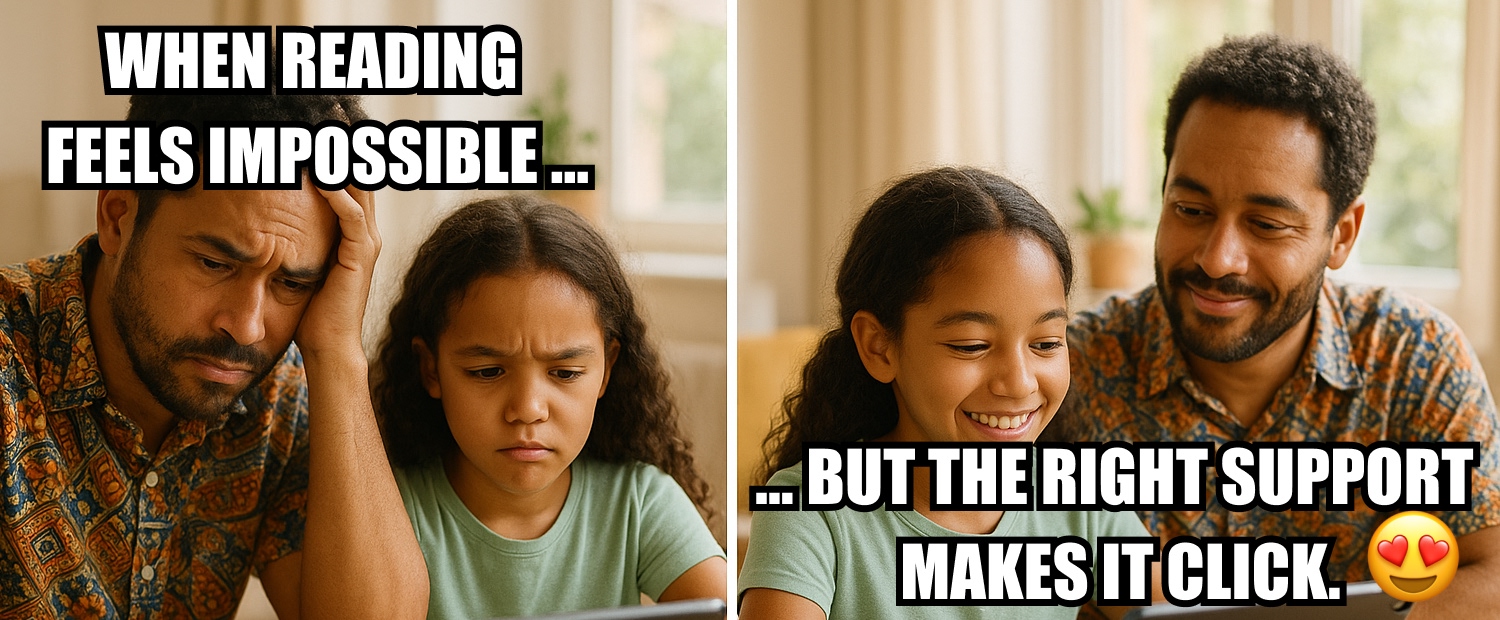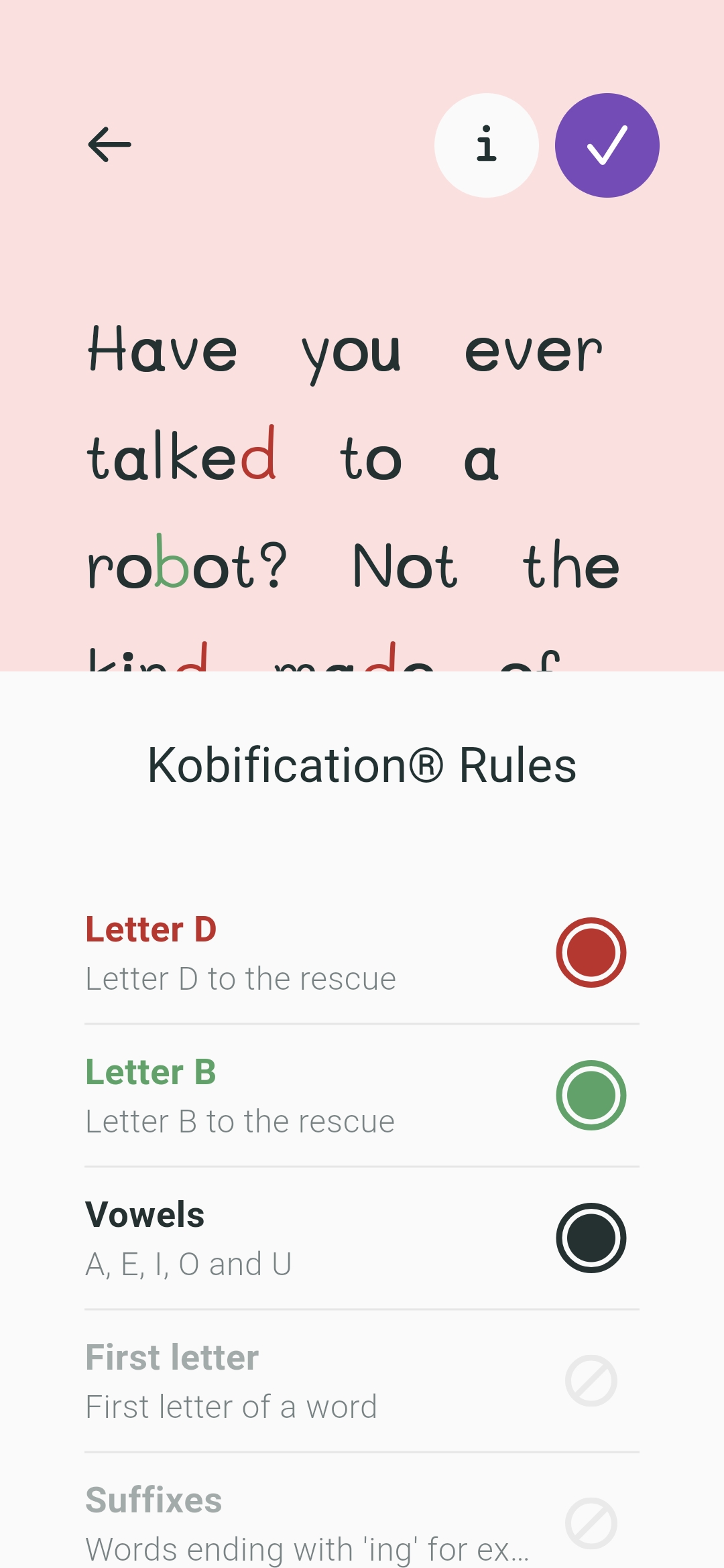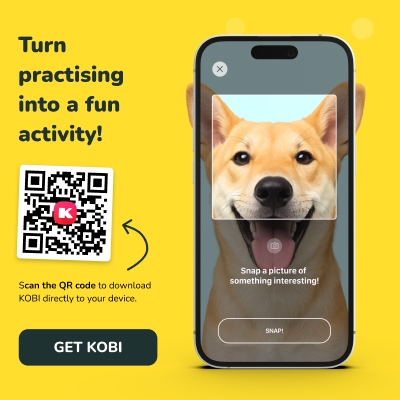Summary: What You’ll Learn in This Article

- What dyslexia is (and isn’t)
- What the Science of Reading says about effective support
- How KOBI tools align with evidence-based strategies
- Ways families can support learning at home without stress
- Reflection prompts to spot progress beyond fluency
Why Dyslexia Feels Overwhelming for Families
When reading feels harder than it should, many families start asking: “Is it just a phase, or could it be dyslexia?”
Dyslexia affects 5–10% of children worldwide and shows up as difficulty with decoding, fluency, and connecting sounds to letters.
But here’s the truth: dyslexia does not mean a child isn’t smart. It does not mean they won’t learn to read. It means they need the right kind of support – structured, personalized, and encouraging.

Why Evidence-Based Support Matters: Science Says So
Decades of research highlight strategies that actually work for dyslexic learners:
- Structured literacy: Direct, systematic phonics instruction supports decoding.
- Repetition with feedback: Kids learn best when they can practice often, with encouragement and correction along the way.
- Personalization: Adjusting font size, spacing, and colors reduces frustration and supports focus.
- Reading and listening together: Combining audio with text builds comprehension while reducing cognitive load.
The Science of Reading confirms that these methods build both skills and confidence.

How KOBI Supports Kids with Dyslexia
KOBI was built with dyslexic learners at the center. Right from the start, its key differentiator is clear: it is the only app that combines audiobook-style narration with active decoding practice. Its biggest breakthrough is that it seamlessly integrates audiobook-style narration with active decoding practice – something no other reading app on the market does.
Children can listen and follow along, then jump in to decode words themselves. This back-and-forth between listening and reading keeps frustration low, builds confidence, and accelerates progress.
Here’s how the full system works:
Step 1: Ease In
Kids create their own photo-based mini stories with Snap-a-Story. Because the story feels personal, motivation is higher and resistance to practice is lower.

Step 2: Perfect Readability
Color-coding for letter confusions, custom fonts, and increased spacing between lines, words, and letters make the page match the needs of your child.
Step 3: The Power of Listening Combined With Reading
This is KOBI’s unique advantage. The app doesn’t just read aloud like an audiobook and it doesn’t just force decoding – it does both together. Kids can listen to narration while following the text, then jump in to read and decode words themselves. KOBI picks just the right words for them to practice, giving immediate feedback that turns learning moments into fun gains. This seamless integration keeps frustration low, builds comprehension, and makes practice more engaging than either approach alone.
Step 4: Independent Reading – Decode Without Fear Using TapTap
When a word gets tough, kids can tap once to hear it or twice to break it into parts. This keeps the reading flow going without embarrassment.
Step 5: Strengthen Meaning With Pictionary
Visuals plus simple definitions anchor new vocabulary so tricky words become memorable “aha” moments.
Step 6: Reinforce and Celebrate With WordVault + WordBlaster
Every difficult word returns in playful review games. Children see their own progress and realize effort really does pay off.
Step 7: Reflect With ThinkTalk
Short, guided chats tie it all together – reminding families that comprehension and conversation matter just as much as speed or accuracy.And here’s the best part: even if you’re not homeschooling, these same benefits make at-home reading practice smoother and less stressful.
Tips for Parents: How to Support Dyslexia at Home
- Keep it short: 10–15 minutes beats a long, draining session.
- Celebrate effort, not perfection: “I love how you tried that word.”
- Use tools, not tension: Let technology reduce frustration so you don’t always have to “correct.”
- Normalize differences: Remind your child that dyslexia is common – and doesn’t define their intelligence.
Why Homeschoolers Love KOBI for Dyslexia Support
- Combines structured practice with fun tools
- Tracks visible progress for kids and parents
- Personalizes reading to each child’s needs
- Builds confidence through small, daily wins
And here’s the best part: even if you’re not homeschooling, these same benefits make at-home reading practice smoother and less stressful.

Reading Practice Doesn’t Have to Be a Battle
Families often tell us that reading at home feels like a struggle. But it doesn’t have to.
Dyslexia is real – and so is progress. With the right supports, kids don’t just “get by.” They thrive.
KOBI makes daily practice feel manageable, evidence-based, and confidence-boosting.
Because the best readers aren’t just accurate – they’re supported.
Key Takeaways
- Dyslexia is common – and manageable with the right support
- Structured, evidence-based practice helps kids thrive
- KOBI tools align with proven dyslexia strategies
- Parents can create stress-free routines that build confidence

